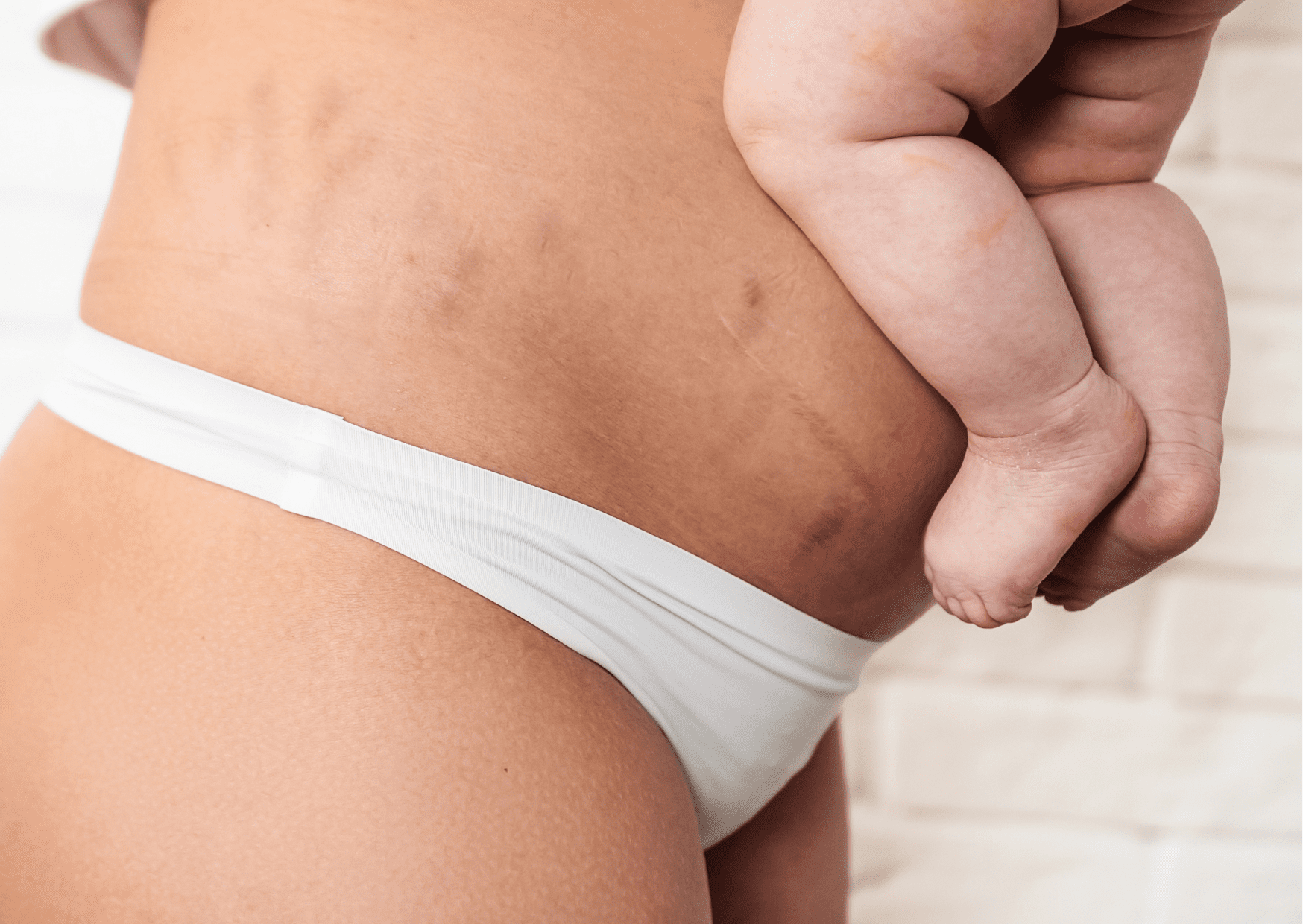Pelvic health physiotherapists play an important role in the multidisciplinary approach to care that ABTA believes is vital to reducing the occurrences of birth trauma and aiding in the recovery of those affected. In this post, pelvic health physiotherapist, Alison Hui outlines the benefits of seeing a physio during pregnancy.
Pregnancy is a time of significant change for your body- there’s the obvious weight gain with your growing bump and boobs, but also hormonal and postural changes, which for some women, can lead to aches and pains. Some women may have their first experience of bladder leakage with a cough or sneeze, and during pregnancy may be the first time you ever hear of the term ‘pelvic floor’.
As pelvic health physiotherapists, we treat many women with pregnancy-related back or pelvic girdle pain and initially, they often assume that any aches will inevitably get worse as the pregnancy progresses…but it doesn’t have to be that way! Nor should you resign yourself to any bladder leakage because you can, and should, address it.
You don’t even have to have a ‘problem’ to be assessed by a pelvic physio. More and more we are seeing women who just want to come in for a pregnancy (or even pre-pregnancy!) check to get to know their bodies better.
How can a Pelvic health physiotherapist help
Help treat aches and pains
Low back pain is very common and affects two-thirds of pregnant women, while pelvic girdle pain (which includes sacroiliac joint and/or pubic symphysis pain) affects 20-25% of women (Liddle & Pennick, 2015). Other common areas where you may experience aches include the thoracic spine (upper to mid-back) and ribs.
Your pelvic health physiotherapist will be able to assess whether there is any muscle tension or dysfunction that may be contributing to your pain, and give you advice around modifying your activities, while giving you exercises to enable you to stay as active and as strong as possible.
Despite increasing weight and pressure on the pelvis with advancing pregnancy, it is still totally possible to improve your pain, and get stronger in pregnancy!
Help prevent leakage, or treat existing bladder or bowel leakage, with pelvic floor muscle training
Pelvic floor muscle (PFM) training can help prevent urinary leakage in pregnancy and in the early postnatal months. There is some evidence that women, who do not have existing issues with leakage, who do PFM training in pregnancy reduce their risk of urinary incontinence in later pregnancy by 62%, and reduce their risk of urinary incontinence at 3-6 months postnatal by 29% compared to women who do not do PFM training in pregnancy (Woodley et al, 2020).
As well as teaching you PFM exercises and giving you a personalised program, your pelvic health physiotherapist will also be able to help with bladder retraining advice and bowel advice if needed.
Check your pelvic floor muscle contraction technique
Are you doing your PFM exercises correctly? The answer I often hear is, “I think so but I’m not sure”. Research suggests that up to 60% of women with pelvic floor dysfunction (such as prolapse or stress urinary incontinence) incorrectly contract their PFM when verbally cued (Thompson & O’Sullivan, 2003). Amongst women with no dysfunction, most are able to correctly contract their PFMs (Henderson et al, 2013), but if you’re not sure, your pelvic physio will be able to check your technique using real-time ultrasound, or via vaginal examination if this is appropriate for you. We physios love to ensure you are confident with your PFM exercises and we will help you build a program to get your PFMs strong to keep you leak-free!
Help manage prolapse symptoms if you have them
Prolapse symptoms can feel like a bulging sensation in the vagina and in pregnancy, symptoms are more often reported by women who have had previous vaginal deliveries and who might also have toddlers or other young children at home. As well as giving you a PFM training program and other prolapse management advice, some pelvic physios can also help minimise your symptoms by fitting you with a silicone vaginal pessary, which is designed to support the vaginal tissue and pelvic organs.
If you feel you need a pessary for symptom management in pregnancy, it’s a good idea to speak to your Obstetrician and get clearance from them first.
Check your abdominal muscles
Rectus abdominis diastasis, or tummy muscle separation, will happen 100% of the time by the end of the third trimester of pregnancy (Fernandes da Mota et al, 2015) as your abdominal muscles need to stretch to accommodate your growing baby. However, regular ‘doming’ or ‘coning’ through the midline of your abdominals should not happen.
Your pelvic health physiotherapist will help you modify the activities and exercises where you notice doming, and can check whether there is any tension or dysfunction through your oblique abdominal muscles that could be contributing to further separation. Some women who try to activate their core muscles actually over-grip through their obliques, so it can be useful to have your core activation technique checked.
Create an exercise plan for you with modifications if needed
Exercise is very important in pregnancy with exercise guidelines recommending at least 30 minutes of moderate intensity exercise, 5 days a week, plus at least 2 days a week of muscle strength exercises. There are so many benefits of exercise, here are just a few: improved strength and fitness, avoiding excessive weight gain, reducing the risk of gestational diabetes, psychological benefits, as well as helping to keep your unborn baby’s weight healthy too (RANZCOG, 2020).
If you’ve never exercised before, your pelvic health physiotherapist will help ease you into a routine to get you as strong as possible before baby arrives. If you’re already an exercise lover but finding that heavy lifts or high impact exercises don’t feel quite right, your physio will help to modify your routine and give you new ideas.
Help with birth preparations and teach you perineal massage
Perineal massage is recommended from 35 weeks gestation to help stretch and prepare the perineum for delivery. A review of research by Beckman & Stock (2013) shows that for first-time mums, perineal massage can help to reduce the incidence of tears requiring suturing, and reduce the need for episiotomy. In women who have had a previous vaginal delivery, perineal massage helps to reduce the chance of having ongoing perineal pain at 3 months after delivery.
Labour or 1:1 birth preparation with a pelvic health physiotherapist involves: a vaginal examination to help relax any pelvic floor muscle tension; teaching you/making sure that you know which direction your PFMs should be moving when you’re trying to push during delivery; training you to be able to breathe and relax during discomfort; teaching you or your partner how to do perineal massage; and advice about labour and positioning. Expectant mums will often start labour prep with us from 36 weeks and will usually book 2-4 sessions before baby’s arrival.
Provide recovery advice for the postnatal period
Having an idea beforehand of what to expect after your vaginal or Caesarean birth can help you prepare for your recovery, because the early postnatal period will be a whirlwind and you will have so many new sensations and routines to get used to! Your pelvic health physiotherapist can give you information on perineal care or on how to best look after yourself post-Caesarean.
We physios love to walk alongside you and support you in pregnancy, keep you strong, and then get to meet your new baby (or babies!) at your 6-week check.
In pregnancy, if you experience any pains or incontinence, or if you just want to learn more about your amazing, changing body, please make sure you contact an experienced pelvic physiotherapist. Many pelvic physiotherapy clinics will also run pregnancy-specific exercise classes, so join in and keep active and strong!
About the Author: Alison Hui is a physiotherapist with a special interest in Women’s and Men’s Health. She is based in Sydney and works at Sydney Pelvic Clinic, providing care for women in the pre- and post-natal periods and running pregnancy and postnatal exercise classes. She also treats a range of bladder, bowel and sexual dysfunctions, and pelvic pain in both women and men.
Alison loves London in the summer and ice cream, and in her spare time you can find her strength training or roaming a gallery with her architect husband.
References
References
Beckmann, M.M. & Stock, O.M. (2013). Antenatal perineal massage for reducing perineal trauma. Cochrane Database of Systematic Reviews, Issue 4. Art. No.: CD005123. DOI: 10.1002/14651858.CD005123.pub3.
Fernandes da Mota, P. G., Pascoal, A. G., Carita, A. I., & Bø, K. (2015). Prevalence and risk factors of diastasis recti abdominis from late pregnancy to 6 months postpartum, and relationship with lumbo-pelvic pain. Manual therapy, 20(1), 200–205. https://doi.org/10.1016/j.math.2014.09.002
Henderson, W. J., Wang, J. S., Egger, J. M., Masters, J. M., & Nygaard, J. I. (2013). Can Women Correctly Contract Their Pelvic Floor Muscles Without Formal Instruction? Female Pelvic Medicine & Reconstructive Surgery, 19(1), 8-12. https://doi.org/10.1097/SPV.0b013e31827ab9d0
Liddle SD, Pennick V. (2015) Interventions for preventing and treating low-back and pelvic pain during pregnancy. Cochrane Database of Systematic Reviews, Issue 9. Art. No.: CD001139. DOI: 10.1002/14651858.CD001139.pub4.
RANZCOG (2020). Exercise during pregnancy. [Online] https://ranzcog.edu.au/RANZCOG_SITE/media/RANZCOG-MEDIA/Women%27s%20Health/
Statement%20and%20guidelines/Clinical-Obstetrics/Exercise-during-pregnancy-(C-Obs-62).pdf?ext=.pdf
Thompson, J., & O’Sullivan, P. (2003). Levator plate movement during voluntary pelvic floor muscle contraction in subjective with incontinence and prolapse; a cross-sectional study and review. International Urogynecology Journal and Pelvic Floor Dysfunction, 14(2), 84-88.
Woodley, S.J., Lawrenson, P., Boyle, R., Cody, J.D., Mørkved, S., Kernohan, A., Hay-Smith, E.J.C. (2020). Pelvic floor muscle training for preventing and treating urinary and faecal incontinence in antenatal and postnatal women. Cochrane Database of Systematic Reviews, Issue 5. Art. No.: CD007471. DOI: 10.1002/14651858.CD007471.pub4.













2 Responses
Bonjour! Superbe article sur les bénéfices de la physiothérapie pelvienne. Je suis une physio canadienne, et un collègue d’origine australienne m’a envoyé un lien envers cette page. C’était une belle surprise de voir votre contenu en français et toutes les autres possibilités linguistiques aussi.
Pourrais-je vous proposer de raffiner votre terminologie pour dire “diastase abdominale”, au lieu de diastase rectale? A priori c’est le rectus abdominis, mais l’adjectif rectale suggère plutôt ce qui a rapport au rectum (voie basse du système digestif) et non les rectus abdominis, ou grands droits. “Séparation des grands droits” est aussi une expression assez commune pour désigner la même condition.
Hi Heather
Amazing to see that we have a reach in Canada!
Thank you for your feedback. The translation unfortunately isn’t actually done by us but a widget built within the website.
Warmest wishes,
Amy